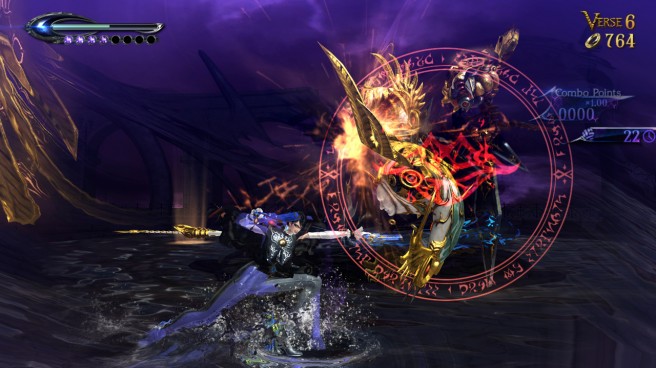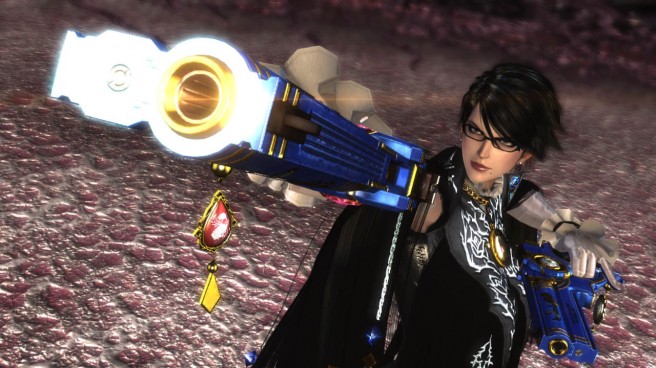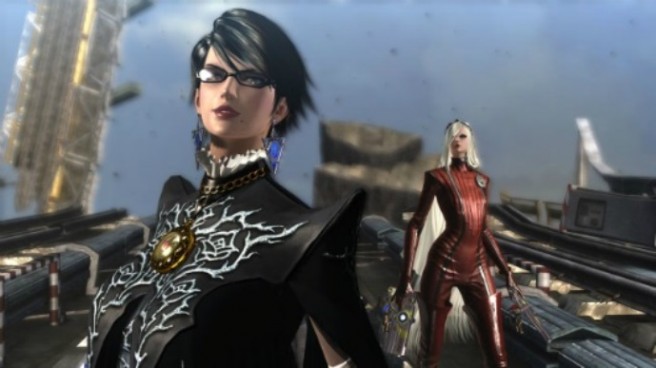Bayonetta 2 launch trailer
Posted on 11 years ago by Brian(@NE_Brian) in Videos, Wii U | 0 comments
More: Bayonetta 2, PlatinumGames
Video: “Nintendo: Bayonetta’s New Home”
Posted on 11 years ago by Brian(@NE_Brian) in Videos, Wii U | 7 Comments
More: Bayonetta 2, PlatinumGames, top
Footage from Bayonetta 2’s first five chapters
Posted on 11 years ago by Brian(@NE_Brian) in Videos, Wii U | 0 comments
More: Bayonetta 2, PlatinumGames
Why EDGE gave Bayonetta 2 a perfect score
Posted on 11 years ago by Brian(@NE_Brian) in News, Wii U | 30 Comments
In this month’s issue of EDGE, the magazine handed out one of the first western verdicts for Bayonetta 2. PlatinumGames’ newest title earned a perfect 10 / 10 mark, making it one of only 17 games to have been awarded with a perfect score.
EDGE said in its review that “Bayonetta 2 is in many ways a perfect fit for Nintendo, with its bright blue skies, its easy charm, its relentless procession of ideas and its immaculately tuned controls.”
Other tidbits from the publication’s review:
More: Bayonetta 2, PlatinumGames
More Bayonetta 2 Tag Climax footage
Posted on 11 years ago by Brian(@NE_Brian) in Videos, Wii U | 1 Comment
More: Bayonetta 2, PlatinumGames
Kamiya again comments on Bayonetta 2’s initially troubled fate and how Nintendo saved the game
Posted on 11 years ago by Brian(@NE_Brian) in News, Wii U | 89 Comments
Last week on Twitter, Platinum Games’ Hideki Kamiya commented further on the development of Bayonetta 2. As has been said before, the game was in a very troubled state before Nintendo stepped in.
Kamiya noted in his tweets that Bayonetta 2’s problems came about when it was initially with SEGA. Something happened when the project was in the works there, and development halted. The game was pitched to various publishers, though it seems that most declined picking up Bayonetta 2. However, Nintendo agreed to step in and development was only then able to proceed.
Head past the break for a full translation of Kamiya’s tweets. They’re quite interesting, even if some of the tidbits had been shared previously!
More: Bayonetta 2, Hideki Kamiya, PlatinumGames, top
Video: Amazing Star Fox Easter egg in Bayonetta 2
Posted on 11 years ago by Brian(@NE_Brian) in Videos, Wii U | 15 Comments
More: Bayonetta 2, PlatinumGames, top
Wii U version of Bayonetta 1 makes a small change to Jeanne’s model
Posted on 11 years ago by Brian(@NE_Brian) in News, Random, Wii U | 44 Comments
There are a few differences in the Wii U version of Bayonetta 1 compared to the original PlayStation 3 and Xbox 360 games. There’s off-TV play and touchscreen support on the GamePad. A few Nintendo costumes are also included. As it turns out, PlatinumGames also made a change to Jeanne’s model.
As explained by the studio’s JP Kellams:
So much for Digital Foundry: they missed the biggest difference between the 360 and Wii U versions of Bayo. We fixed Jeanne’s chest size.
— JP Kellams (@PG_jp) September 27, 2014
Kamiya wasn’t happy with the original model (chest was too big), so we made it smaller, like the concept art. 🙂
— JP Kellams (@PG_jp) September 27, 2014
More: Bayonetta 1, PlatinumGames
Bayonetta 1 360/PS3 comparisons, frame rate test
Posted on 11 years ago by Brian(@NE_Brian) in Videos, Wii U | 7 Comments
More: Bayonetta, Bayonetta 1, Bee Tribe, comparison, PlatinumGames
Bayonetta 2 sold through 67% of its initial shipment in Japan
Posted on 11 years ago by Brian(@NE_Brian) in News, Wii U | 56 Comments
According to Media Create, Bayonetta 2 sold roughly 39,000 units in its first week. But this doesn’t paint the full picture.
Bayonetta 1 sold 200,000 copies when it launched for the PlayStation 3 and Xbox 360 back in 2009. In a follow-up report, Media Create mentions that the decline in sales for the sequel comes down to the Wii U’s smaller install base and different demographics.
Media Create also shares a bit more about Bayonetta 2’s sales. The game actually managed to sell through 67.29 percent of its initial shipment. There weren’t sell-outs, but Bayonetta 2 did end up shifting approximately two-thirds of the shipment.
It’s also important to remember that Bayonetta 2 launched in Japan on September 20. Media Create’s reporting period for the week ended on September 21, so the game did not come close to experiencing a full week of sales.


